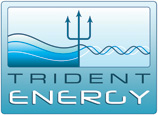Controlling Power from the Sea
Once designed and constructed, the control system is the only way of altering performance
Renewable energy is a simple concept: our everyday electricity needs, supplied by sources which are naturally replenished. As finite energy resources are used up, there has been increased effort to design machines which capture renewable energy. Marine energy offers a vast potential source of renewable energy and there are currently hundreds of wave and tidal energy converters at some stage of development. One of the key challenges for commercial success of any wave energy converter is to provide useful power output across a wide range of sea conditions with waves which are continually changing. However, once designed and constructed, the only means of altering the performance of a wave energy device is with the control system. Being able to tune the device can greatly improve the energy captured, especially if done on a wave-by-wave basis. The ability to control a device in real-time therefore becomes an important enabling technology for the commercialisation of wave energy.
Device control can offer increases in power as well as improved reliability
Most wave energy converters only have a narrow band of sea conditions in which they produce their rated power output. Even to arrive at such a configuration would normally have required some compromise as it is not possible to design a wave energy converter which offers an optimal response across a wide range of conditions. Once a device has been designed and constructed, the control system is the only way of altering performance. Using the control system it is possible to tune the device for each incoming wave to widen the operational envelope of the wave energy converter and improve power capture. Control also offers a means of limiting mechanical forces by deliberately de-tuning the device. Not only can this provide the immediate benefits of improved survivability and availability but can also inform future designs, potentially resulting in a simpler design and therefore reduced manufacturing costs.
A slow response is as good as no response
Currently wave energy converters typically use conventional means of transmitting power captured from the sea. Also known as power take-offs, these include hydraulics, gearboxes and rotary generators. These technologies, although offering tried and tested solutions, can be difficult to control, requiring rapid changes in pressures, flow directions or manipulation of valves. The slower response time offered by conventional power take-off solutions does not fit with the desire to control devices on a wave-by-wave basis.
Control using reliable power electronics improves availability
As well as slow response times, conventional power take-offs can be complex designs in an effort to provide some level of device control. However this complexity introduces more mechanical components, such as manifolds, valves, accumulators, high pressure components and gearboxes, resulting in systems with poor reliability or high maintenance. Given the harsh offshore environment, where access for repairs and maintenance is difficult and costly, unreliability is simply not an option.
Achievement of real time control opens new doors
A reliable and responsive power-take off solution is required to advance the commercialisation of wave energy. Trident Energy has developed, demonstrated and patented a low cost, direct drive linear generator and associated control system. This converts linear motion directly into electricity without the need for intermediate systems such as gearboxes and hydraulics, thereby offering a simpler and more reliable power-take off solution. The company has developed and tested a sophisticated control system which allows for real-time control of the currents flowing within the machine. The control system can alter the resistance the generator offers to motion in real-time as well as the ability to instantaneously operate as a motor. This functionality opens the door to operating the generator simultaneously as a highly tuneable damper and spring; two key attributes for successful control of wave energy devices but with the tuning being provided by high reliability electronics rather than failure-prone mechanical components. In addition to demonstration of the generator control system, the company has also built and tested the full power conversion electronics which convert the time varying output from the linear generator into grid compatible power as well as providing autonomous monitoring, data logging and remote access.
Real-time control – more power, more of the time
The successful demonstration of a commercial linear generator, control system and associated power conversion introduces a new reliable and highly controllable power take-off solution suitable for many wave energy converters as well as some tidal energy converters which are specifically designed for operation in shallow water. This enables previously unrealised control strategies to be implemented with more reliable hardware, thereby improving device availability, power production and advancing the commercialisation of marine energy.
